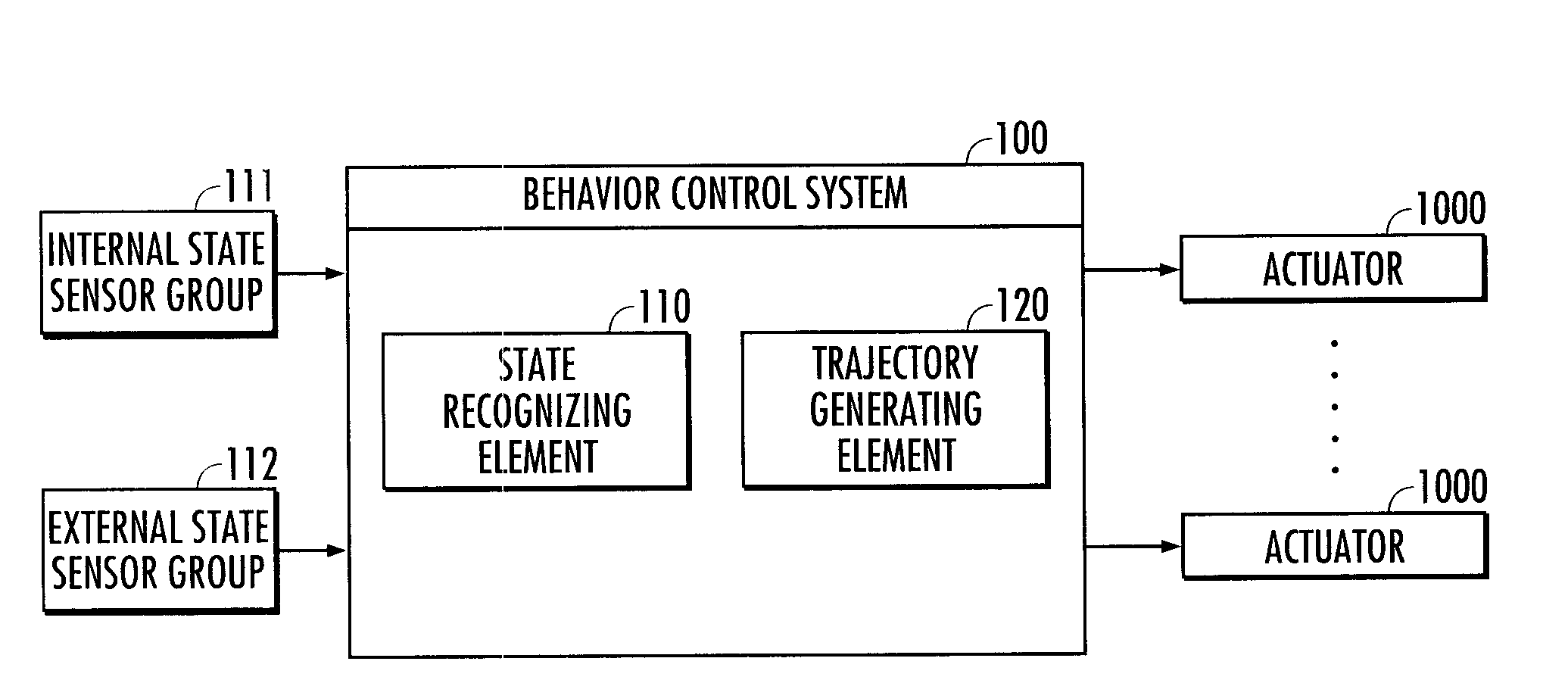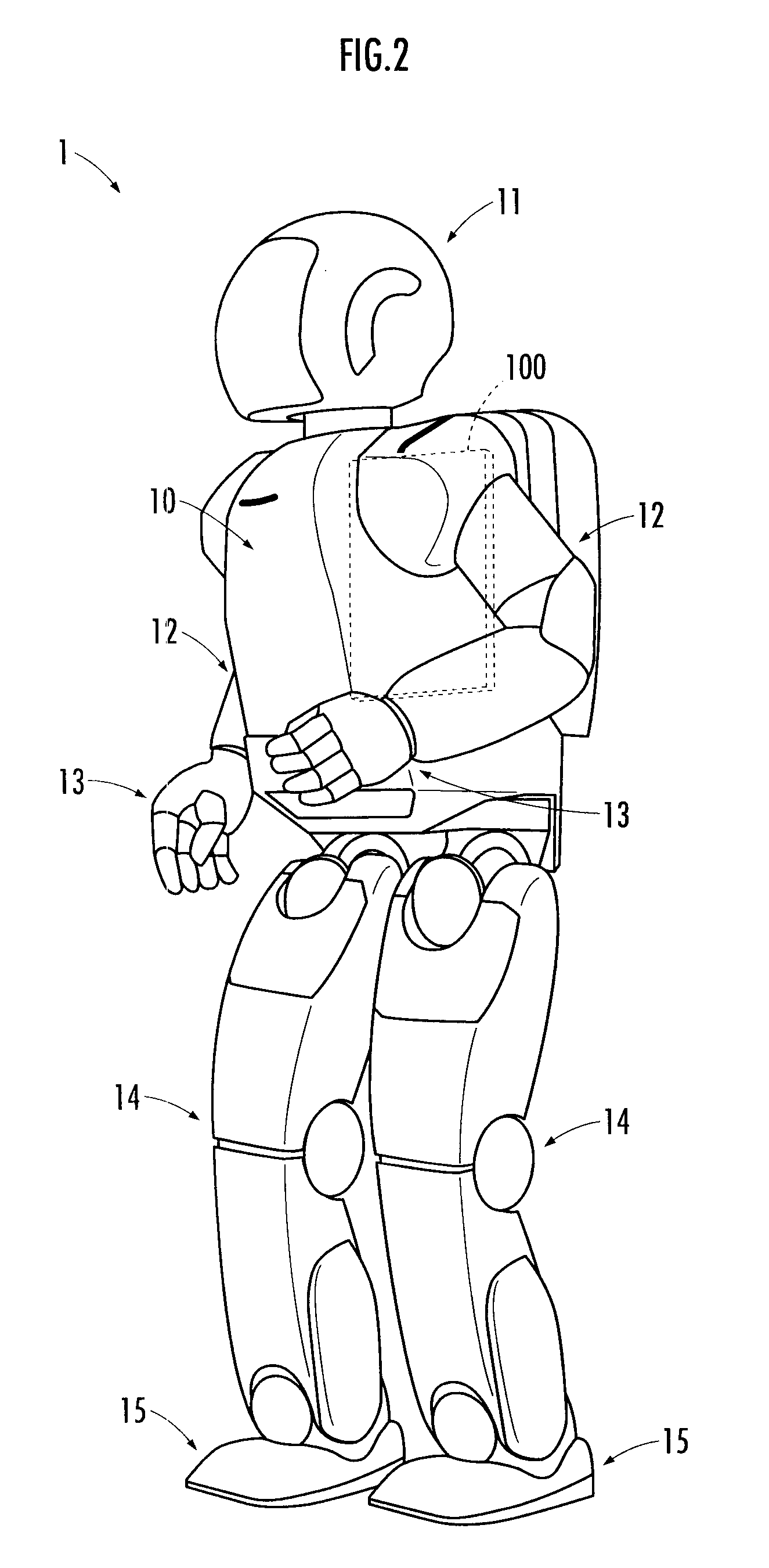Behavior control system
a technology of behavior control and control system, applied in the direction of electric programme control, program control, instruments, etc., can solve the problems of affecting the smoothness of the motion of the agent, and difficulty in accomplishing the task as smoothly
- Summary
- Abstract
- Description
- Claims
- Application Information
AI Technical Summary
Benefits of technology
Problems solved by technology
Method used
Image
Examples
first embodiment
[0101]For example, in the first embodiment, the permissible passing range of the learning trajectory P at t=0 (refer to FIG. 4(a)) is set to be zero or sufficiently narrow or small, whereas the permissible passing ranges at other points are set to be wider or larger to a certain extent by the expansions of the probability distributions determined by stochastic transition models (refer to FIGS. 8(a) and 8(b)).
second embodiment
[0102]In the second embodiment, the permissible passing ranges of the learning trajectory P at t=0 (refer to FIG. 9(a)) and the point t=h when the ball hits the racket (refer to FIG. 9(b)) are set to be zero or sufficiently narrow or small, whereas the permissible passing ranges at other points are set to be wider or larger to a certain extent by the expansions of the probability distributions determined by stochastic transition models (refer to FIGS. 11(a) and 11(b)). The flexible adjustment of the breadth of the permissible passing ranges is possible, because fluctuations or displacements of the attracting point u of the attractor R are allowed (refer to relational expression (12)).
[0103]As described above, the breadth or magnitude of the permissible passing range is set for the agent to perform a task, thus making it possible to generate an appropriate learning trajectory for the robot 1 to carry out the task while reflecting a motion characteristic of the instructor thereon. Thi...
PUM
 Login to View More
Login to View More Abstract
Description
Claims
Application Information
 Login to View More
Login to View More - R&D
- Intellectual Property
- Life Sciences
- Materials
- Tech Scout
- Unparalleled Data Quality
- Higher Quality Content
- 60% Fewer Hallucinations
Browse by: Latest US Patents, China's latest patents, Technical Efficacy Thesaurus, Application Domain, Technology Topic, Popular Technical Reports.
© 2025 PatSnap. All rights reserved.Legal|Privacy policy|Modern Slavery Act Transparency Statement|Sitemap|About US| Contact US: help@patsnap.com



